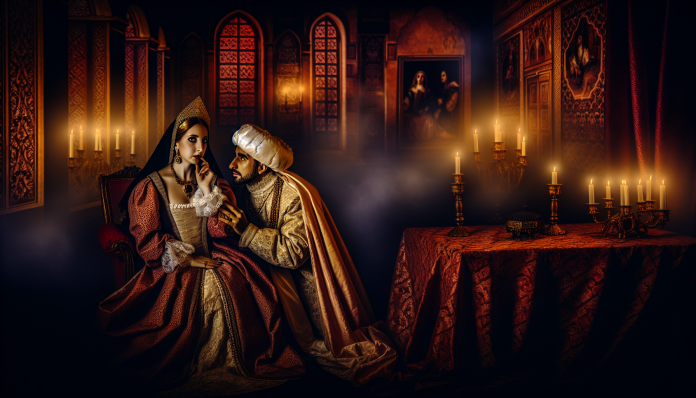Introduction
In a time when women were largely seen as pawns in political machinations, Queen Christina of Sweden (1626-1689) shone as a beacon of independence, intellect, and scandal. Leading her reign from 1632 to 1654, when she famously abdicated her throne to convert to Catholicism, Christina was as equally renowned for her questionable romantic connections as she was for her intellectual pursuits. As a ruler who defied societal norms of her time, her secret lovers left an indelible mark on her legacy—one that continues to excite curiosity and debate among historians and the public alike.
The 17th century was a period deeply entrenched in patriarchal values, with rigidly defined gender roles. Women were expected to marry, produce heirs, and maintain household decorum, while same-sex relationships were frowned upon and often criminalized. Yet, Christina’s personal life challenged these norms, catching the attention of both contemporary observers and those curious about her multifaceted existence.
The Scandal
Central to Christina’s intrigue was her complex relationship with the women in her court, particularly her close friendship with the alluring and charismatic Countess Ebba Sparre. While historical records are sometimes ambiguous, many scholars believe their relationship teetered on the edge of romance. Letters exchanged between the two reveal affection that soared beyond mere friendship, with Christina once writing, “Your absence is unbearable; I count the hours until we can be together again.”
The most scandalous chapter came in 1654, when rumors began to swirl about Christina’s alleged liaisons with various female courtiers. Quarrels and gossip filled the halls of the royal palace, and rival factions in the court seized on these rumors to undermine her authority. While the details of her romantic escapades remain murky, whispers of secret rendezvous and intimate companionship painted a provocative picture of a queen unafraid to challenge conventional desires.
Key Events and Reactions
- 1654 Abdication: Christina shocked Europe by abdicating her throne, which many interpreted as an escape from the political and social pressures surrounding her rumored relationships.
- Contemporary Views: Critics decried her for abandoning her royal responsibilities, while proponents saw her as a liberated spirit—a figure of the Renaissance who prioritized personal freedom over societal constraints.
Historical accounts reveal mixed sentiments. Henrietta of France famously remarked, “To despise the crowns of kingdoms for the glories of love is the surest way to win both.” Others were less sympathetic; many regarded Christina as an aberration, an unrefined queen who muddied the dignity of her position with her proclivities.
Moral and Cultural Analysis
Society’s response to Christina’s relationships highlights a significant cultural double standard. Male leaders engaging in affairs were often celebrated, while women faced severe scrutiny, accused of bringing disgrace and shame to their houses. The soon-to-be-absolved queen faced public disdain, while the men in her life operated under a veneer of respectability.
The consequences of her scandal also reverberated across Europe. By relinquishing her throne in the name of personal choice, Christina opened the door for more progressive conversations about gender and sexuality, though these ideas would take centuries to gain wider acceptance.
Modern Perspective
If the scandal were to break today, reactions would likely differ tremendously. As societal norms evolve, same-sex relationships are increasingly recognized and celebrated. Christina’s defiance would resonate with modern discussions about sexual identity and autonomy, potentially casting her as an early LGBTQ+ symbol—an intersectional figure advocating for the liberation of love. Social media would amplify her story, transforming whispers of scandal into global discussions on love, freedom, and acceptance.
In essence, the secret lovers of Queen Christina reveal not only the complexities of her personal life but also the changing tides of societal norms regarding love and power—a narrative that speaks volumes even today.

